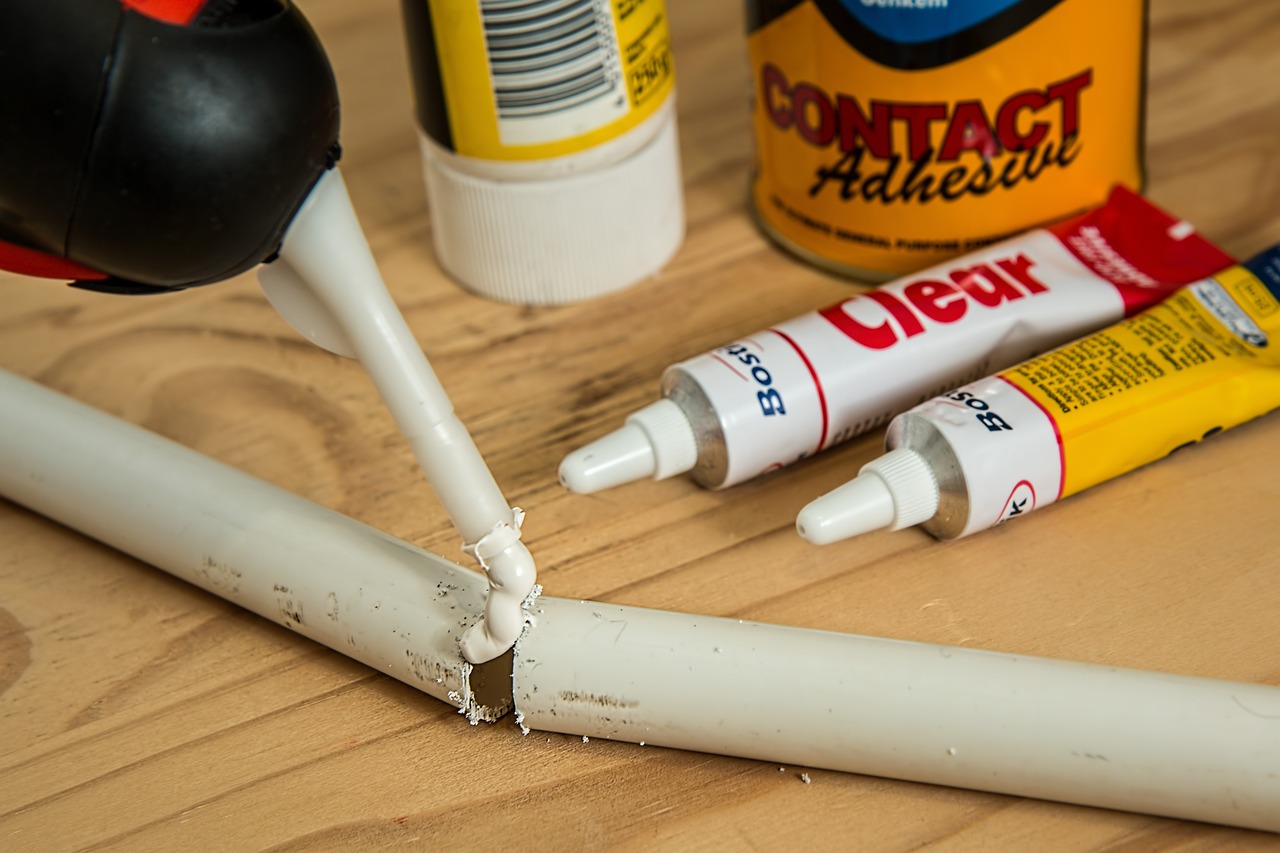Adhesives
Adhesives are bonding agents used to join materials by glueing. Adhesives can be used in construction in many situations:
- Carpet laying.
- Ceramic tiles.
- Countertop lamination.
- Drywall lamination.
- Flooring underlay.
- Glulam.
- Heating, ventilation, air conditioning connections.
- Timber jointing.
- Manufactured housing.
- Pre-fabricated panels.
- Resilient flooring.
- Roofing.
- Wall coverings.
The most common types of adhesive are as follows:
- PVA (polyvinyl acetate): A general purpose woodwork glue, with some water resistant properties.
- Synthetic resin: A strong water-resistant woodwork glue.
- Epoxy resin: Used for metals and plastics.
- Acrylic cement: Used for acrylic and some types of plastic. The adhesive ‘melts’ the surface of the plastic and fuses it together.
- Casein: Made from sour milk. A cold setting adhesive in the form of a powder which is mixed with water.
- Urea formaldehyde: A cold setting resin glue. Although moisture resistant, it is usually restricted to timber members used in dry, unexposed conditions as it loses strength after prolonged exposure to water or heat.
- Resorcinol formaldehyde: A cold setting glue that is suitable for timber members used in external situations. Will set at temperatures down to 15°C and does not lose strength at high temperatures.
- Phenol formaldehyde: A warm setting adhesive that requires a temperature of above around 86°C to set.
[edit] Related articles on Designing Buildings
- Acrylic.
- Cable tie.
- Clamp.
- Construction adhesives market.
- Crimp.
- Cross-laminated timber.
- Deleterious materials in construction.
- Epoxy adhesives.
- Fillers.
- Glulam.
- Grout.
- Mastic sealant.
- Polymer discovery.
- Putty.
- Sealant.
- Strap.
- Structural adhesives.
- Types of fixings.
- Volatile organic compounds.
[edit] External references
- ‘Building Construction Handbook’ (6th ed.), CHUDLEY, R., GREENO, R., Butterworth-Heinemann (2007)
Featured articles and news
RTPI leader to become new CIOB Chief Executive Officer
Dr Victoria Hills MRTPI, FICE to take over after Caroline Gumble’s departure.
Social and affordable housing, a long term plan for delivery
The “Delivering a Decade of Renewal for Social and Affordable Housing” strategy sets out future path.
A change to adoptive architecture
Effects of global weather warming on architectural detailing, material choice and human interaction.
The proposed publicly owned and backed subsidiary of Homes England, to facilitate new homes.
How big is the problem and what can we do to mitigate the effects?
Overheating guidance and tools for building designers
A number of cool guides to help with the heat.
The UK's Modern Industrial Strategy: A 10 year plan
Previous consultation criticism, current key elements and general support with some persisting reservations.
Building Safety Regulator reforms
New roles, new staff and a new fast track service pave the way for a single construction regulator.
Architectural Technologist CPDs and Communications
CIAT CPD… and how you can do it!
Cooling centres and cool spaces
Managing extreme heat in cities by directing the public to places for heat stress relief and water sources.
Winter gardens: A brief history and warm variations
Extending the season with glass in different forms and terms.
Restoring Great Yarmouth's Winter Gardens
Transforming one of the least sustainable constructions imaginable.
Construction Skills Mission Board launch sector drive
Newly formed government and industry collaboration set strategy for recruiting an additional 100,000 construction workers a year.
New Architects Code comes into effect in September 2025
ARB Architects Code of Conduct and Practice available with ongoing consultation regarding guidance.
Welsh Skills Body (Medr) launches ambitious plan
The new skills body brings together funding and regulation of tertiary education and research for the devolved nation.
Paul Gandy FCIOB announced as next CIOB President
Former Tilbury Douglas CEO takes helm.
UK Infrastructure: A 10 Year Strategy. In brief with reactions
With the National Infrastructure and Service Transformation Authority (NISTA).
























Comments
[edit] To make a comment about this article, or to suggest changes, click 'Add a comment' above. Separate your comments from any existing comments by inserting a horizontal line.